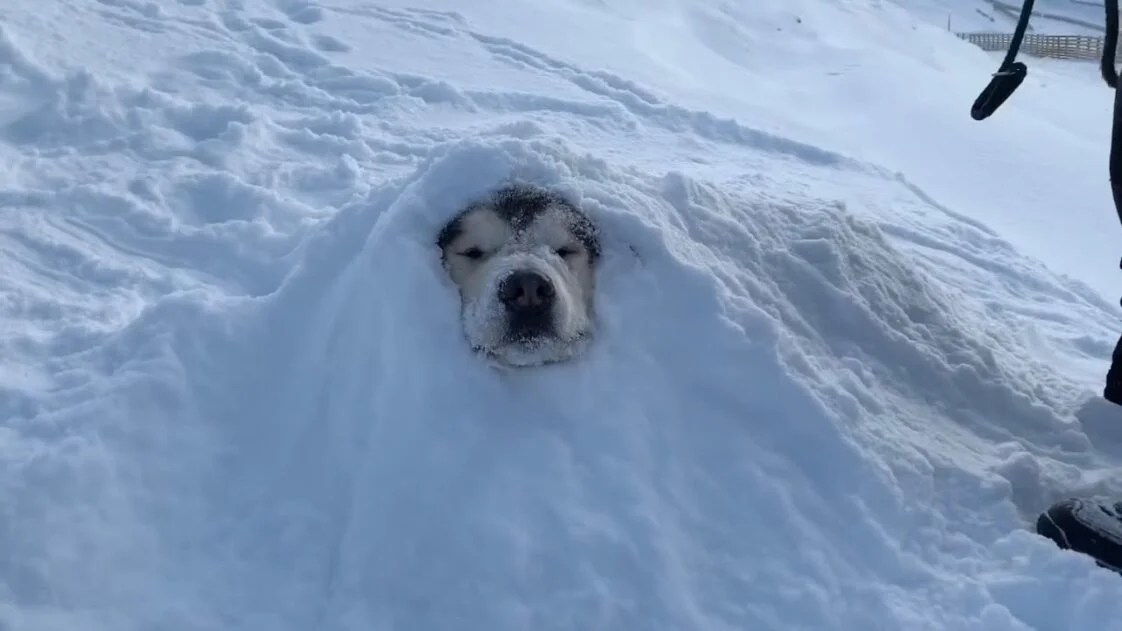Adventures Of A Husky Buried In Snow: A Winter Wonderland

The sight of a husky buried in snow is nothing short of a winter wonderland delight. These majestic dogs, known for their thick fur and playful spirit, thrive in snowy environments. Watching them frolic and bury themselves in heaps of snow can bring joy to anyone’s heart. But what happens when a husky gets a little too adventurous and ends up buried in a snowdrift? This article explores the adorable antics of huskies in snow, the breed's characteristics, and some tips for keeping these furry companions safe during winter escapades.
Huskies are not just beautiful; they are also incredibly resilient and playful creatures. Their history as sled dogs means they are well adapted to cold climates. When a husky finds itself buried in snow, it can be both a playful moment and a reminder of the breed's strong instincts. This article will delve into the playful nature of huskies, their love for snow, and what to do if you ever find your husky buried in snow.
From their origins in Siberia to their status as popular family pets, huskies have captured the hearts of dog lovers worldwide. Join us as we explore the enchanting world of huskies, particularly when they encounter the white, fluffy wonder of snow.
What Makes Huskies Love Snow So Much?
Huskies are bred for cold climates, which makes them naturally inclined to enjoy snow. But what is it about snow that gets these dogs so excited? Here are a few reasons:
- Insulation: Their thick double coat provides excellent insulation, allowing them to play in the snow for hours without feeling cold.
- Energy Release: Huskies have a lot of energy and love to run. Snow provides the perfect surface for them to sprint, leap, and dig.
- Instincts: As sled dogs, they have a strong instinct to run in snow, making their time in winter wonderlands feel like a natural calling.
How Do You Ensure Your Husky is Safe While Playing in the Snow?
While it's fun to watch a husky play in the snow, safety is paramount. Here are some tips to ensure your husky stays safe while enjoying the winter weather:
What Should You Do If Your Husky Gets Buried in Snow?
Finding your husky buried in snow can be alarming. Here’s what you should do:
Biography of a Famous Husky: Balto
One of the most famous huskies in history is Balto, a Siberian Husky who became a national hero in the United States.
| Attribute | Details |
|---|---|
| Name | Balto |
| Breed | Siberian Husky |
| Born | 1923 |
| Famous For | Leading a sled dog team during the 1925 serum run to Nome, Alaska |
| Death | 1933 |
| Legacy | Statue in New York City, beloved in dog history |
Why Did Balto Become a Legend?
Balto's legendary status stems from his role in the 1925 serum run to Nome, where he and his team delivered life-saving medicine during a diphtheria outbreak. His leadership and endurance inspired many and led to the preservation of his memory through statues and stories. Balto's tale exemplifies the strength and loyalty of huskies, especially when faced with challenging circumstances.
Can Huskies Adapt to Warmer Climates?
While huskies are built for cold weather, many owners wonder if they can adapt to warmer climates. The answer is both yes and no. Huskies can live in warmer areas, but there are important considerations:
- Heat Sensitivity: Huskies are more susceptible to heat than some other breeds, so they need to be monitored closely.
- Hydration: Ensure your husky has access to fresh water at all times.
- Shade and Rest: Provide plenty of shaded areas and allow for frequent rest breaks during hot days.
What Are the Signs of Overheating in Huskies?
Recognizing the signs of overheating is crucial, especially if your husky is not accustomed to warmer temperatures. Look for:
- Excessive Panting: If your husky is panting heavily, it may be a sign of overheating.
- Drooling: Increased drooling can indicate heat stress.
- Weakness: If your husky seems lethargic or weak, it’s time to cool them down.
- Vomiting: This can be a serious sign of heatstroke and requires immediate attention.
Final Thoughts: The Charm of a Husky Buried in Snow
The image of a husky buried in snow is a charming testament to their playful nature and love for winter. These dogs are not just pets; they are companions that bring joy, adventure, and a bit of mischief to our lives. Their incredible endurance and adaptability, combined with their striking appearance, make them a beloved breed among many. Whether you have a husky of your own or simply enjoy watching them play in the snow, their antics are sure to warm your heart.
ncG1vNJzZmirn521b6%2FOpmasp5idu6bD0qCcq7FhZXypwdKksGaapae2prCMoqVmq56kxG%2B006aj